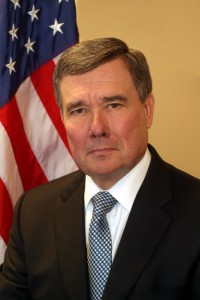Congratulations to the Partnership for Drug-Free Kids on your collaboration with the Boston University School of Public Health to continue providing Join Together. Your work to spread knowledge and promote collaboration among the many fields and professions committed to reducing the toll of drug use and its consequences is vital.
Your audience and members, from the addiction prevention, treatment and recovery communities, to advocates, researchers, policy makers, educators and health care professionals, are the most valuable resource we have to help identify, develop and promote effective and evidenced-based solutions to a problem that affects us all.
The Obama Administration will soon release the 2011 National Drug Control Strategy (NDCS), built upon the foundation laid by the 2010 NDCS. The 2011 Strategy continues a comprehensive rebalancing of our approach to drug control. It addresses the public health and public safety consequences of illicit drug use through robust support for prevention, early intervention, treatment and support for those in recovery from addiction.
Our commitment goes beyond mere rhetoric – even in these tough economic times. The President’s FY 2012 Budget contains an overall increase in drug control funding, with increases in funding for prevention of $123 million and for treatment programs by $99 million.
The Strategy also continues our support for the vital role of law enforcement and promotion of innovative criminal justice programs that can help break the cycle of substance use, arrest and incarceration.
Over the past year the Obama Administration has achieved some significant milestones in drug policy.
In August, President Obama signed into law the Fair Sentencing Act, which dramatically reduced a 100-to-1 disparity between the amounts of crack and powder cocaine that trigger mandatory minimum sentences, eliminated the mandatory minimum sentence for simple possession of crack cocaine and increased penalties for major drug traffickers.
That same month, the Office of National Drug Control Policy, in collaboration with the Substance Abuse and Mental Health Services Administration (SAMHSA), awarded $85.6 million in grants to more than 741 community anti-drug coalitions across the country. Our support for these groups, who are the backbone of our Drug Free Communities (DFC) program, will help them build and strengthen locally based anti-drug coalitions and develop data-driven plans to increase awareness, engage the media and change norms, laws and procedures.
And in October, the President signed into law the Secure and Responsible Drug Disposal Act of 2010, which will help communities combat the Nation’s prescription drug epidemic by providing states and localities the authority to collect unneeded prescription drugs.
Much work remains to be done. Prescription drug abuse is rampant nationwide – over 27,000 drug overdose deaths occurred in 2007 in the U.S., and drug overdose is now the leading cause of injury death in 17 states.
Drug use also hampers our childrens’ ability to out-educate our global competitors. Research shows that youth in school who are current marijuana users are less likely to have an average grade of “A” than those who are not. Additionally, college students who use prescription stimulant medications non-medically typically have lower grade point averages, are more likely to be heavy drinkers and users of other illicit drugs, more likely to meet diagnostic criteria for dependence on alcohol and marijuana, to skip class more frequently and to spend less time studying.
President Obama’s goal is to reduce drug use and its consequences by 15 percent over the next five years. We need your help. Our roadmap to meeting that goal involves a partnership between the Federal Government and you. It will also require teamwork and collaboration that spans the fields and draws on the strengths of the prevention, treatment, law enforcement, criminal justice and recovery communities.
If you’re a parent of a teenager, take time today to talk to them about the harms of illegal drugs. Research shows that you’re the most powerful messenger to deliver that message. If you’re a community leader, join a local drug-free coalition, or start your own to help empower young people to reject negative influences in their lives. Learn about how the Affordable Care Act is making it easier to integrate drug treatment into our mainstream health care system. Judges, prosecutors and defense attorneys can support alternatives to incarceration by learning more about drug courts, innovative probation and drug market programs and by supporting the work that they do.
Our children, and their children, will only be equipped to reach their potential and compete with their peers around the globe if they are educated, prepared and healthy and drug free. By reducing drug use and its consequences, teaching children the value of healthy and responsible life choices, and promoting education, innovation and excellence, we can ensure the future is ours to win.
R. Gil Kerlikowske
Director
White House Office of National Drug Control Policy
Published
April 2011
 Get Support
Get Support

